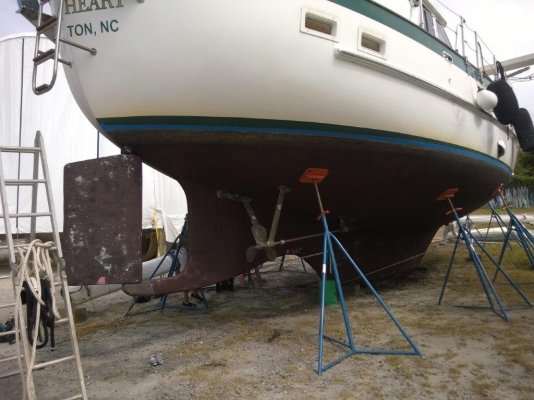I said "won't necessarily" increase in height. The speed of the wave is related only to its length. The height is the height, and in the case of a boat is related to the displacement. A light planing boat will not raise much wave height because it is not displacing much water (it's running displacement is its weight - lift generated). A heavy planing boat displaces a lot more, and raises a higher wave. If they are both running the same speed, the length of the wave will be the same. If there is very little lift, and the boat very heavy, the wave will be higher still, but still the same length.
Now let's do a Gedänken experiment. Take a displacement type hull, perhaps double ended and with rocker and angled buttocks. Make it very light. Pull it through the water with high power. It will exceed hull speed by however fast you want to pull it. Now begin adding weight. The wave will get higher, and the power required more. Add enough weight and the crest of the bow wave will come over the rail. You can add freeboard to stop this, or change the bow shape to better cast the bow wave aside. The angled buttocks will tend to suck the stern down, and there may be some shapes having fine enough sterns that they would get sucked underwater at the stern and flood. Again more freeboard would prevent this, and few displacement shapes have these types of sections.
Catamaran hulls are classic displacement shapes: semi-circular sections, rocker, angled buttocks, non-immersed transoms. Yet they are expected to exceed hull speed by large multiples regularly. The reason is the narrow shape and relatively light displacement create a low wave. They have no flat planing sections that promote planing at all. They look like a stretched Delfin underwater. This is the practical application of non-planing hulls exceeding 'hull speed'. Delfin is a less practical application, for sure.


 Thanks!! Delfin
Thanks!! Delfin

